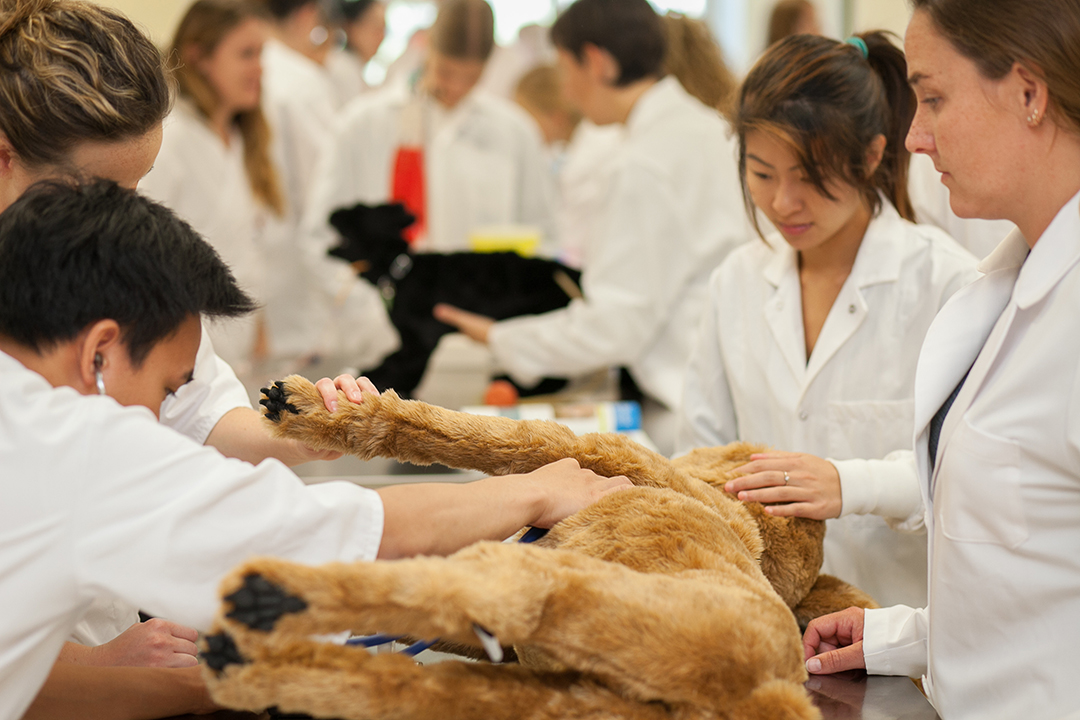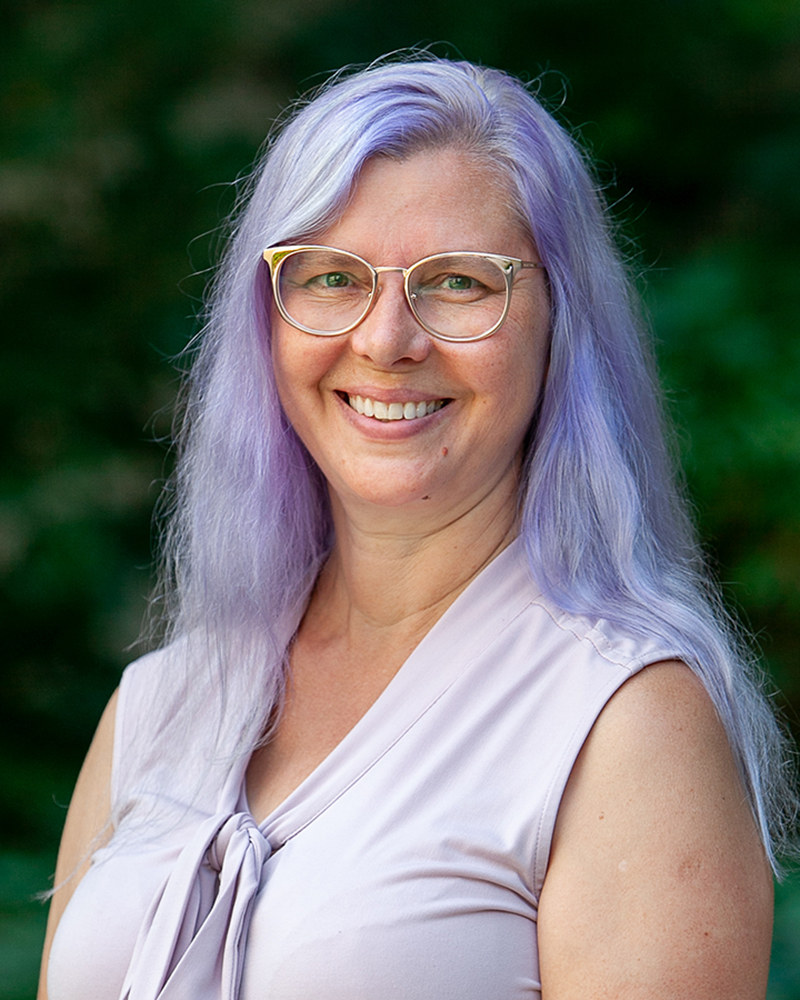
New vet curriculum boosts clinical hands-on training
In August 2020, the Western College of Veterinary Medicine (WCVM) welcomed its new class of first-year students with the roll-out of a new Doctor of Veterinary Medicine (DVM) curriculum.
By Nykole King
Besides providing a more cohesive approach to veterinary education, the new curriculum offers more integrated learning with plenty of clinical hands-on training. Before the curriculum revision, the veterinary program’s first year included 10 hours of clinical training; now, first-year students have 70 hours of clinical instruction — much of it offered in a new clinical skills course.
“We wanted to look at everything that we've been teaching and make sure that it absolutely had to be there and that it was being taught at the right level,” says Dr. Chris Clark, the WCVM’s associate dean (academic) at the WCVM.
“And by doing that and moving some stuff around, we were able to create some space, which allows us to put in a bit more … clinical hands-on teaching.”
Year 1 of the veterinary college’s DVM program has also been restructured so five core courses — anatomy, physiology, biochemistry, histology and embryology — are now encompassed in two foundational courses: anatomy, and form and function.
“We’ve co-ordinated all those various subjects better so that we get it in that sequence, so that we start big, we then go small and smaller in structure until we can re-integrate the information at bigger scales again when we talk about function,” says Dr. Lynn Weber, head of the WCVM’s Department of Veterinary Biomedical Sciences (VBMS).
Other first-year changes included moving general pathology from the second-year course load and introducing another new course called professional foundations.
While the college regularly adjusts aspects of its DVM curriculum, such a comprehensive restructuring of the first-year veterinary program hasn’t taken place for many years. Over two years ago, WCVM faculty began the process by examining all aspects of the first-year program to determine what foundational information the students need to know and in what sequence to teach it without overwhelming the students.
“Students were left to put the pieces together [using the old curriculum], whereas now it’s sequenced much better and we’ve co-ordinated the materials so we use cohesive terminology and deliver it in a way that is very tightly sequenced in time and it’s all very fresh in the students’ minds,” says Weber.
The curriculum renewal process was spearheaded by Clark as well as Dr. Gillian Muir while she was head of VBMS — the department that’s responsible for teaching most of the veterinary program’s first-year classes. Since mid-2020, when Muir became the college’s interim dean (and now dean), Weber and Clark have been focusing on the initiative with other faculty members.
One important catalyst for curriculum renewal at the WCVM and other veterinary schools is competency-based veterinary education (CBVE). This teaching approach was developed by the American Association of Veterinary Medical Colleges (AAVMC), based on the model used in human medicine education.
“Veterinary medicine is very much about doing things and using knowledge, not just learning stuff,” says Clark. “And it really was a desire to have more sort of hands-on training earlier in the program.”
The college has also moved to using the objective structured clinical examinations (OSCE). This series of practical exams test the students on the program’s content and how the knowledge is applied in a clinical setting.
For example, the OSCEs test students on their examination skills with small or large animals, or how they administer drugs to patients — all clinical skills they will need to know for veterinary practice.
However stressful the OSCEs are to complete, Clark says the students understand the value of applied clinical skills and appreciate how the practical tests relate to their future work as veterinarians.
“They’re thinking more like how you need to think when you’re a veterinarian.”
Members of the WCVM’s Class of 2024 will be the first students to use the college’s renewed curriculum for all four years of their program. During their second year, the students will take a new clinical skills course, a new regulatory medicine course, an introductory course in medical imaging as well as a professional foundations course. Beyond these new additions, some of the college’s longstanding courses have been merged in the second year.
Plans for the third-year program include revamping the way that faculty and staff teach clinical skills, using more simulated cases to prepare students for their clinical rotations in the fourth year.
During the 2020-21 academic year, COVID-19 restrictions meant that all WCVM courses had to be delivered online with limited time spent in labs for smaller groups of students. WCVM instructors had to develop new methods to deliver the same quality of education and to cover all the necessary content.
It was a challenging year for students as well as for course instructors who had to dramatically change their teaching methods to meet the demands of online teaching.
“We’ve all had to work harder than we have ever worked in our entire careers,” says Weber. “This [past] year was very rough, but I personally can say I’m proud of where we landed — I’m proud of what we gave to the students. I think it’s top quality – COVID or no COVID.”
However difficult the circumstances, ingenuity was one way the faculty persevered in a year of firsts. One innovative change was integrating three-dimensional renderings of anatomical structures into the pre-lab material. This allowed students to study the virtual representations and be more prepared before attending their in-person labs.
“They’re further ahead than any other class I’ve ever seen. They’re putting things together, they’re thinking more practically and more holistically,” says Weber.
Clark says the program’s first year is typically the most difficult since students need to learn and retain large amounts of information. But even with the obstacle of limited on-campus courses, the first-year students came out of the year satisfied with what they learned.
“I'm still amazed by it,” says Clark, adding that the veterinary students worked incredibly hard to make their first year a success.
“Our team managed to implement a new curriculum in the most difficult circumstances possible, and we still had the students come out of it saying it was great, so that really is down to everyone’s hard work,” says Clark.
